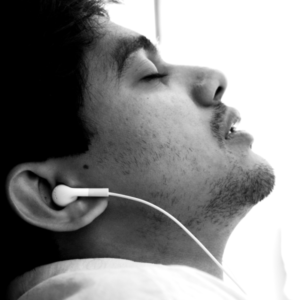7 Insights into Obtaining Profound Emotional Freedom
Insight #1: Every emotional experience, including anxiety, has two components:
- The story which seems to give rise to the emotional experience.
- The energy behind that experience, the stream of sensation accompanying it.
We often get so caught up in the story that is attached to our emotions, that we unwittingly magnify the energy behind such experiences, and in reality only complicate the so-called problem. No amount of intellectual analysis can ever discharge the imprisoned energetic stream of communication that underlies the intensity of the experience. This is why mental approaches to solving emotional problems (like talk therapy and incessant complaining and theorizing) rarely, if ever, offer any deep relief.
It is attending to the energy giving rise to such experiences, that makes it possible to resolve anxiety quickly and deeply. In my next blog, I will share meditations that demonstrate this through direct experience.
 Insight #2: There are two types of ineffective emotions that support increased anxiety, stress, and lack of confidence:
Insight #2: There are two types of ineffective emotions that support increased anxiety, stress, and lack of confidence:
1. Presumptive Emotions
2. Accumulated Emotions
Presumptive emotions result from our rigid expectations as well as attempting to force outcomes to align with those inflexible expectations. They also emerge as a consequence of chronically imagining outcomes that are unaligned with our expectations. These types of emotions carry with them a field of energy that inhibits us from seeing other possibilities and potentials, much like viewing the world through sunglasses; everything we perceive takes on the same tone and hue.
Accumulated emotions are all the emotions we failed to fully experience in the past, resulting in a reservoir of unconsciously and habitually bottled energy that, because it is left unresolved, secretly hinders and sabotages our lives. This stockpile of confined energy, which has been locked into both our physical and subtle bodies, has been linked to numerous unconscious influences, such as Carl Jung’s concept of the shadow or Eckhart Tolle’s pain body. Regardless of the way you conceive of it, this habitual avoidance of feeling our emotions fully has real-world consequences.
Insight #3: All emotion is energy in motion. It’s just energy, and it can’t hurt us.
When we realize that all our emotions are actually gifts, we can relax and stop avoiding them or getting lost in their stories. We can accept them for what they really are: energetic communications.
Insight #4: We can’t obtain full clarity regarding the message behind emotional energy until:
- We take full responsibility for our emotional state.
- We decide to let go of our story and the payoff of being right.
- We consciously and compassionately feel the energy fully, down to its deepest root.
In order to avoid feeling the core of that intensity and potentially being overwhelmed, there is a tendency to deny responsibility for what we feel in certain situations; instead we blame others for “making” us feel what we feel. Yet it is we who are either consciously or unconsciously choosing to feel the way we feel habitually in the face of such events. Until we take complete responsibility for every vestige of ingrained feeling we experience, that pent-up reservoir of unresolved energy can never be integrated, healed, and dissolved.
 Attending to the root cause behind the emotional intensity eventually reveals to us all of the hidden attachments and aversions we’ve been unconsciously entertaining. And when we directly experience such insights, the underlying energetic charge often resolves spontaneously because we instantly recognize the error we made in holding onto it. Immediate, piercing, and persistent discernment into the root causes behind these emotions (as opposed to mere intellectual recognition) will tend to clear them instantly, especially when that attention is accompanied by nonjudgmental and nurturing compassion.
Attending to the root cause behind the emotional intensity eventually reveals to us all of the hidden attachments and aversions we’ve been unconsciously entertaining. And when we directly experience such insights, the underlying energetic charge often resolves spontaneously because we instantly recognize the error we made in holding onto it. Immediate, piercing, and persistent discernment into the root causes behind these emotions (as opposed to mere intellectual recognition) will tend to clear them instantly, especially when that attention is accompanied by nonjudgmental and nurturing compassion.
In order to attend to the energy behind the intensity of the experience, however, it is first necessary to let go of the story that is attached to that experience. This essentially means relinquishing both the thoughts and the “payoff” of being “right” that often accompany our habitual emotions. Only by taking full responsibility for our emotional states and surrendering our stories can we completely feel down into the core of the emotional energy.
Insight #5: The more this stored emotional charge builds up in our physical and subtle bodies over time, the greater the stress we will feel whenever life circumstances give rise to similar feelings and reactions.
This pent-up energy increases our experience of stress due to its added pressure. It takes a lot of energy to compress and store this repressed stream of energy. This pent-up energy eventually spills over into the autonomic nervous system, leading to increased stress and illness, decreased performance, and dysfunctional coping mechanisms like addictions, escapism, and impulsive behavior.
NOTE: The habitual acting out of these pent-up stresses, which we in the West often refer to as “venting,” not only fails to fully resolve such aggregated energy, it in fact reinforces and adds to the stored pressure by bolstering the inefficient neuroendocrinal networks that support such ongoing stresses and anxieties.
Insight #6: This habitual avoidance of thoroughly feeling our emotions happens largely unconsciously and seems to be related to a preverbal fear of being overwhelmed by acute emotional states, which are seemingly too extreme to be fully assimilated.
This insight is important because it helps us realize how conditioned we are to both avoid and become intensely identified with what we are feeling. Apparently, before we had the capacity for thought, and before our brains had developed the higher cognitive capacity to make sense of the already intense emotional experiences mediated by the limbic brain (which is, from an evolutionary perspective, much older in the human species than the neocortex and is almost fully wired in humans by age six), we as human beings universally made an unconscious, preverbal decision to avoid feeling the fullness of such emotions. There seemed to be no way to fully assimilate these experiences, so we instinctively cut ourselves off from them. As a result, we not only chronically avoid such experiences, we tend to deeply identify with them on some level, either consciously or unconsciously believing ourselves to be defined by them. And because we made this decision before we developed the capacity for language, it was buried in the recesses of the unconscious.
 These incomplete emotional experiences continue to influence the development of our emotional brain, hardwiring us to repeat these experiences until we learn the lesson behind them, which can only come when we fully own and feel these emotions, allowing clarity, wisdom, and insight to fully blossom.
These incomplete emotional experiences continue to influence the development of our emotional brain, hardwiring us to repeat these experiences until we learn the lesson behind them, which can only come when we fully own and feel these emotions, allowing clarity, wisdom, and insight to fully blossom.
Insight #7: By consciously feeling down into the very core of the trapped energy behind these fragmented experiences, this energy can quickly release and dissolve, leaving in its place the clarity, resolve, and capacity necessary to meet any stressful situation with grace, wisdom, and compassion.
When we do this, we are actually helping to develop neural pathways between our emotional brain and the part of our brain that can more fully integrate and temper such experiences. This capacity to fully feel our feelings without avoidance, modification, judgment, or over-identification is actually a very natural capacity that we all have. We are essentially using higher awareness and compassion as a dynamic solvent to bring resolution and insight into chaotic emotional experiences. But because our parents and society in general weren’t handed a no-nonsense guide to the human mind, we were never taught how to do this. The more we do this basic practice, the more inner freedom and emotional competence we experience, and the more we realize our highest potential.
Leave a Comment
You must be logged in to post a comment.

Leave your comments below